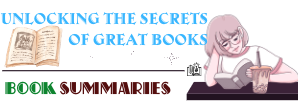War and Peace by Nikolayevich Tolstoy – Book review
“War and Peace,” written by Nikolayevich Tolstoy, is a monumental literary work that has captivated readers for generations. This epic novel explores the lives of several Russian aristocratic families against the backdrop of war and political turmoil in the early 19th century. With its intricate plot and profound exploration of human nature, “War and Peace” stands as one of the most celebrated novels in world literature.
Spanning over a decade, “War and Peace” follows the intertwining lives of various characters as they navigate love, loss, duty, and personal transformation during a time of great upheaval.
Overview of “War and Peace” by Tolstoy
“War and Peace” by Leo Tolstoy is a monumental literary work that delves into the intricate lives of several Russian aristocratic families during the Napoleonic era. Set against the backdrop of war, this epic novel follows characters such as Pierre Bezukhov, Prince Andrei Bolkonsky, and Natasha Rostova as they navigate through love affairs, family conflicts, and political turmoil.
The plot of “War and Peace” is multifaceted and spans over several years. It begins with Napoleon’s invasion of Russia in 1812 and chronicles the subsequent battles and their impact on the lives of the characters. The story seamlessly weaves together personal dramas with historical events, offering readers a panoramic view of Russian society during this tumultuous period.
One of the key themes explored in “War and Peace” is the futility of war. Tolstoy delves into the horrors of battle, vividly describing its chaotic nature while also questioning its purpose. Through his characters’ experiences on both sides of the conflict, Tolstoy showcases how war ultimately brings destruction and misery to all involved.
Another central theme is love in its various forms. From passionate romances to familial bonds, Tolstoy examines different manifestations of love throughout his narrative. The complex relationships between characters provide insight into human emotions, desires, and vulnerabilities.
Tolstoy also explores philosophical ideas related to free will versus determinism.
Plot Summary: Major events in the book
In “War and Peace,” Tolstoy weaves a complex narrative that spans over fifteen years and encompasses the lives of several interconnected characters. The story begins in 1805 with the anticipation of war between Napoleon’s French army and the Russian Empire. As tensions rise, Pierre Bezukhov, an idealistic but socially awkward young man, inherits his father’s vast fortune and finds himself thrust into high society. Meanwhile, Prince Andrei Bolkonsky, disillusioned by his marriage to a cold-hearted woman, seeks purpose on the battlefield.
As war breaks out, Prince Andrei joins the Russian army and experiences the harsh realities of battle at Austerlitz. Back in Moscow, Pierre becomes entangled in a web of affairs and falls for Natasha Rostova, a vibrant young woman engaged to another man. However, their relationship is put on hold when Napoleon invades Russia in 1812. The book takes an introspective turn as characters grapple with their mortality amidst the chaos of war.
Amidst all this turmoil, Tolstoy explores themes such as love, fate versus free will, and the nature of power. Through vivid descriptions of battles and intimate portrayals of personal struggles during wartime, “War and Peace” captures both the grand scale of history while delving into the depths of human emotion. It is through these major events that readers are compelled to reflect upon life’s most fundamental questions about love, purpose, and our place within society.
Characters: Key players in the story
In “War and Peace” by Nikolayevich Tolstoy, the story revolves around a wide cast of characters who play crucial roles in shaping the narrative. One of the key players is Prince Andrei Bolkonsky, a young and idealistic nobleman who enlists in the army to find purpose and glory. Throughout the novel, we witness his transformation from an ambitious soldier to a disillusioned man haunted by the horrors of war.
Another significant character is Natasha Rostova, a vivacious and youthful girl whose journey explores themes of love, passion, and self-discovery. Initially portrayed as innocent and naive, Natasha’s experiences lead her through various romantic entanglements that challenge her beliefs about love and societal expectations. Her growth throughout the story highlights Tolstoy’s exploration of female agency during this time period.
Additionally, Pierre Bezukhov emerges as another central figure in “War and Peace.” As an illegitimate son seeking his place in society, Pierre embarks on a spiritual quest for meaning amidst the chaos of war. His introspective nature prompts him to question established norms and engage with philosophical ideas that challenge both himself and those around him.
These key characters serve as lenses through which Tolstoy examines themes such as love, war, fate vs. free will, societal roles, and personal development. Their contrasting journeys intertwine within the broader historical context to provide readers with an intricate portrayal of life during this tumultuous era.
Themes: Love, war, fate, and historical context
“War and Peace” is a literary masterpiece penned by Nikolayevich Tolstoy. Set against the backdrop of Russia’s war with Napoleon in the early 19th century, the novel explores an array of themes that captivate readers. Love, one of the central motifs in the story, is intricately woven into the lives of its characters. Through various relationships, such as Pierre Bezukhov’s unrequited love for Natasha Rostova and Prince Andrei Bolkonsky’s tumultuous marriage to Lise, Tolstoy delves into different facets of love – its power to inspire, its ability to cause heartache and longing.
The theme of war permeates throughout “War and Peace,” offering a stark portrayal of the brutality and chaos that accompanies armed conflict. From vivid depictions on the battlefield to personal accounts from soldiers like Nikolai Rostov and Denisov, Tolstoy exposes both the glory and devastation wrought by war. Fate is another recurring motif in this epic novel. The characters’ lives are shaped by circumstances beyond their control – be it historical events or societal expectations – highlighting how individual choices are often entwined with larger forces at play.
Tolstoy skillfully embeds “War and Peace” within its historical context, providing readers with a comprehensive understanding of Russia during this tumultuous period.
Tolstoy’s Writing Style: Long sentences and philosophical musings
In “War and Peace,” Tolstoy showcases his distinctive writing style with his use of long sentences and profound philosophical musings. The novel spans a vast canvas, depicting the lives of various characters against the backdrop of Napoleonic wars. Tolstoy’s writing immerses readers in the intricacies of Russian society during this tumultuous period. His prose is characterized by its length, often consisting of multiple clauses and digressions that delve into the inner thoughts and emotions of the characters.
Through these lengthy sentences, Tolstoy captures not only the external events but also delves deep into the minds and souls of his characters. As readers navigate through these intricate sentence structures, they become intimately acquainted with the inner workings, desires, and motivations driving each individual’s actions. Moreover, Tolstoy’s philosophical musings add further depth to his narrative. He explores complex themes such as fate versus free will, love versus duty, and the nature of war itself.
Tolstoy’s unique writing style in “War and Peace” allows him to create a rich tapestry that interweaves historical events with intimate human experiences. By employing long sentences filled with intricate details and introspective examinations, he brings to life a vivid portrayal of both external conflicts on battlefields and internal turmoil within individuals’ hearts and minds. This distinctive blend sets “War and Peace” apart as a literary masterpiece that continues to captivate readers across generations.
Significance and Legacy: Impact of the novel
The novel “War and Peace” by Nikolayevich Tolstoy is often regarded as one of the greatest works of literature ever written. Set against the backdrop of the Napoleonic Wars in Russia, the novel follows a vast array of characters and explores themes such as love, war, power, and fate.
One significant aspect of “War and Peace” is its exploration of human nature in times of conflict. Tolstoy delves deep into the minds and emotions of his characters, depicting their struggles with morality, identity, and purpose during wartime. Through vivid descriptions and introspective passages, he highlights the universal experiences that individuals face when confronted with the chaos and uncertainty of war.
The legacy of “War and Peace” extends far beyond its initial publication in 1869. The novel has had a profound impact on subsequent generations of writers, influencing their storytelling techniques and thematic explorations. Its intricate plot structure, complex character development, and philosophical musings have inspired countless authors to tackle similar themes in their own works. Furthermore, “War and Peace” continues to captivate readers worldwide with its timeless portrayal of human nature amidst historical events. It serves as a reminder that even in times of great turmoil, our shared humanity endures through love, compassion, and understanding.
Conclusion: Timeless themes explored in a classic novel
In conclusion, “War and Peace” by Nikolayevich Tolstoy is a classic novel that delves into timeless themes that continue to resonate with readers today. One of the key themes explored in the book is the nature of war and its impacts on individuals and society as a whole. Tolstoy expertly portrays the chaos, violence, and destruction brought about by war, highlighting its devastating consequences on both soldiers and civilians.
Another significant theme examined in “War and Peace” is the search for meaning and purpose in life. Through his diverse cast of characters, Tolstoy explores different paths to fulfillment – from love and family to intellectual pursuits or religious devotion. This theme prompts readers to reflect on their own lives and consider what truly brings them happiness and satisfaction.
Overall, “War and Peace” stands as a testament to Tolstoy’s genius in capturing the complexities of human life through richly developed characters and thought-provoking themes. It serves as a reminder that despite being set during a specific time period – Napoleonic Wars – the issues it addresses are timeless, making it a novel that continues to be relevant for generations of readers.












